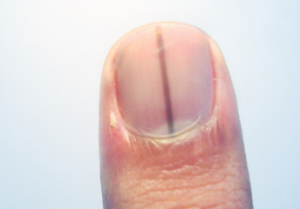Experts around the world are sounding the alarm about ultra-processed foods and how quickly they’ve reshaped modern diets.
They say UPFs aren’t just slipping into grocery bags here and there.
They’re becoming the backbone of how entire populations eat.
A major three-paper series in The Lancet gathers global data and lays out the issue bluntly: UPFs are replacing traditional meals and bringing a wave of chronic health problems along with them.
The researchers argue there’s already more than enough evidence to justify action right now.
Waiting for perfect science would only let UPFs dig even deeper into global eating habits.
Why UPFs Are Replacing Real Food
The authors emphasize that the rise of UPFs isn’t a story about individuals making poor choices.
It’s a story about industrial food systems designed to turn cheap ingredients into addictive, ready-to-eat products.
And these products are sold by corporations with enormous marketing budgets and political influence.
The researchers say that while personal responsibility matters, it can’t fix a food environment built to push people toward ultra-processed options.
Stronger policies are needed to reshape that environment so healthier choices don’t feel like uphill battles.
Expert Concerns About Corporate Power
Professor Carlos Monteiro from the University of São Paulo explains that UPFs have swept across global diets with astonishing speed.
Fresh foods and minimally processed meals are being squeezed out by products engineered for convenience, long shelf life, and irresistible flavors.
He says this shift is being driven by global corporations that aggressively market these foods while lobbying against policies that would protect public health.
Professor Camila Corvalan from the University of Chile says this is exactly why governments must step in with bold, unified policies.
She highlights front-of-package labels, taxes, and marketing restrictions as immediate steps countries can take.
The Push for a Global Public Health Response
Dr. Phillip Baker from the University of Sydney compares the needed response to the fight against big tobacco.
He says governments must protect policy-making spaces from corporate lobbying and build strong alliances that can advocate for healthier food systems.
Without this, the food industry will continue steering nutrition policy in its favor.
The Lancet series uses the Nova classification system to define UPFs.
These foods are built from low-cost industrial ingredients like hydrogenated oils, protein isolates, and syrups.
They’re usually packed with additives to mimic real flavors and textures.
And many are designed to replace entire meals.
How UPFs Took Over Global Diets
The first paper reviews over a decade of research on UPFs.
Study after study shows that as UPF intake rises, diet quality drops.
Countries around the world are seeing dramatic increases in how much of their daily calories now come from ultra-processed products.
Spain climbed from 11 percent to 32 percent.
China went from 4 percent to 10 percent.
Mexico and Brazil more than doubled.
And in the US and UK, UPFs have stayed above 50 percent of total calories for two decades.
That means more than half of the typical diet in these countries is coming from industrial formulations instead of real food.
Health Risks Linked to Ultra-Processed Foods: Applies Even to Thin People

Freepik
A systematic review of 104 long-term studies found 92 of them showed increased risk for at least one chronic disease among people with high UPF consumption.
The list of associated conditions continues to expand.
Obesity
Type 2 diabetes
Cardiovascular disease
Depression
Gut issues
And even premature death
Researchers are still debating which mechanisms cause the most harm.
Some point to the additives.
Others focus on the lack of fiber and protein.
Some believe the processing itself changes how the body responds to these foods.
But Professor Mathilde Touvier from France’s national health research institute stresses that scientific debates shouldn’t be confused with corporate attempts to muddy the waters.
She says the evidence is strong enough to act now.
Policy Changes to Reduce UPF Consumption
The second paper focuses on the kinds of policies that could help reverse UPF dominance.
One major recommendation is adding UPF markers — dyes, sweeteners, flavors, emulsifiers — directly to front-of-package labels.
This would prevent companies from swapping out one unhealthy ingredient for another just to get around existing rules.
The authors also push for stronger marketing limits, especially advertising targeted at kids and teens.
They suggest banning UPFs entirely in schools and hospitals.
They also recommend capping supermarket shelf space devoted to these products.
School Meals and Access to Fresh Food
Brazil’s school meal program is cited as a standout example.
The country has drastically reduced UPFs in school cafeterias and plans to require that 90 percent of meals be made from fresh or minimally processed foods by 2026.
The authors also support taxing certain UPFs and using the revenue to subsidize healthier foods for families with lower incomes.
Professor Marion Nestle from New York University says that although each country has its own food culture and challenges, the need for action is universal.
She says UPFs have become so deeply embedded in eating habits that reversing the trend requires aggressive policies aimed at both the food supply and the marketing behind it.
Associate Professor Gyorgy Scrinis adds that healthier options also need to be easy and realistic.
People with long work hours or limited time aren’t going to magically cook elaborate meals.
Healthy food has to be both accessible and convenient.
Corporate Influence and the UPF Boom
The third paper examines how UPF companies built this dominance.
Ultra-processed products bring in about $1.9 trillion a year.
That kind of profit gives companies enormous political reach.
The series outlines how these corporations fund interest groups, lobby governments, challenge regulations in court, influence public opinion, and sponsor research that downplays the risks.
Professor Simon Barquera from Mexico’s National Institute of Public Health says the narrative that individuals are entirely to blame simply doesn’t hold up.
The global rise of UPFs is the result of strategic corporate decisions, not personal weakness.
He says companies often present themselves as helpful partners in improving food systems, but their actions consistently prioritize profits over public health.
Why a Global Movement Is Needed
The authors say the scale of the UPF problem requires a coordinated global response.
Professor Karen Hoffman from the University of the Witwatersrand says the world needs the same kind of united push that reshaped tobacco policy decades ago.
She argues that the power imbalance between corporations and public health advocates must be corrected.
Without this, regulations will remain watered-down and ineffective.
The series calls for protecting policy-making from corporate interference, ending conflicts of interest between health organizations and industry, and strengthening networks working to reduce UPF consumption.
A Path Toward Healthier Global Diets

The authors say the future doesn’t have to be bleak.
Dr. Phillip Baker explains that while UPFs dominate the global food supply today, a different future is possible.
Governments can regulate effectively. Communities can demand better options.
Food systems can be rebuilt to elevate local producers and protect cultural food traditions.
Healthier diets can be accessible and affordable, not just aspirational.
The takeaway from The Lancet series is simple but urgent: Ultra-processed foods have taken over because the food system allowed them to.
And changing that system is the only way to change the outcome.
![]()



























